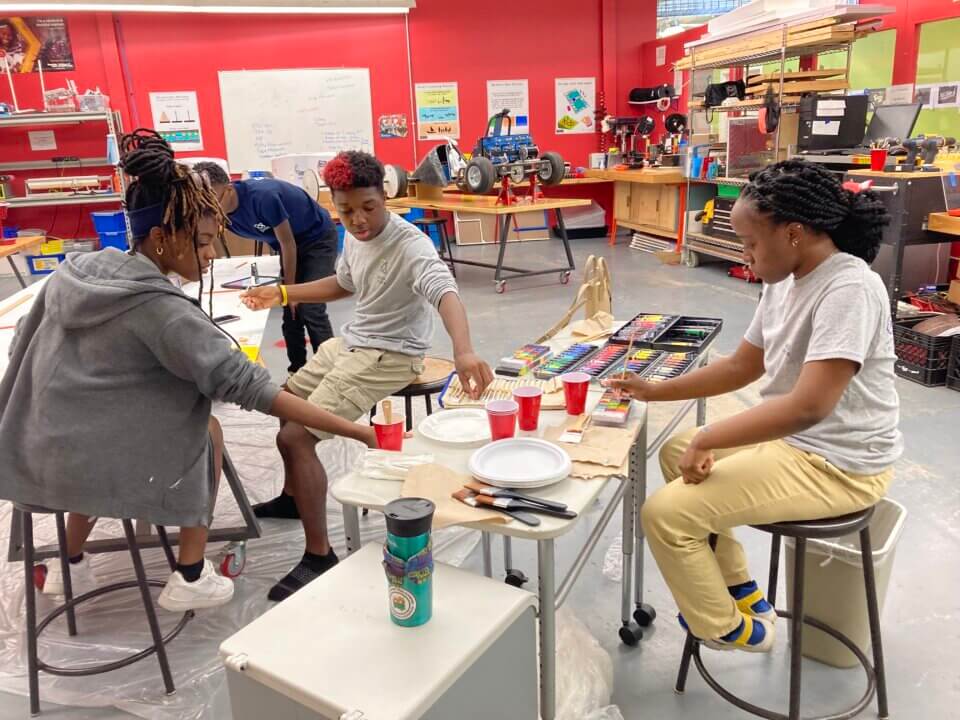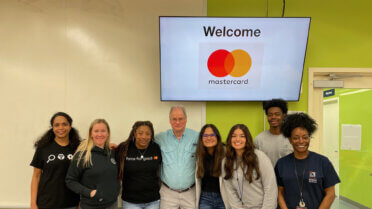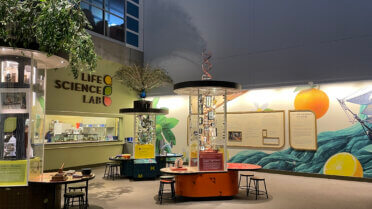Support science for our future. Make a gift to the Science Center’s Curiosity Fund to help support STEM education efforts in St. Louis.
This summer, teens in the Science Center’s Youth Exploring Science (YES) Program’s Media Arts component installed two large murals at the Taylor Community Science Resource Center. As part of the projects, the YES Teens collaborated to enhance the space, inspire their fellow (and future) teens in the YES Program, and use technology and teamwork to see the projects through, from conceptualizing to installation.
Before the murals could be placed in the Taylor Building’s hallway and the Integrative Medicine & Well-Being component’s classroom, they were simple wooden boards measuring 4 by 8 feet.
“To create the murals, the teens first had to come up with a sketch of their design,” says Jasmine Krueger, manager of the YES Program’s Media Arts component. To do so, they used iPads and Apple Pencils, as well as Adobe Fresco, an industry-standard design software commonly used by designers and illustrators worldwide.
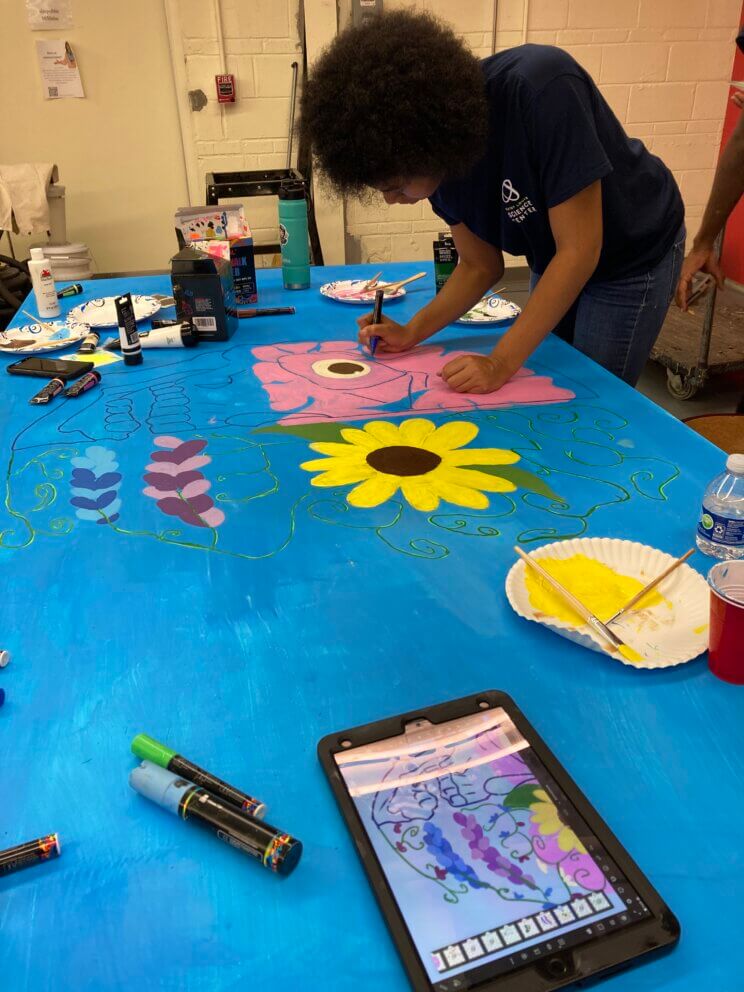
“Once their ideas were sketched, the teens then pitched their idea to me, and we critiqued and discussed,” Krueger continues. “Then, once the idea was approved, the teens had to spray paint the board for each mural, scale up and transfer each drawing, do the actual painting, and of course, make some revisions along the way.”
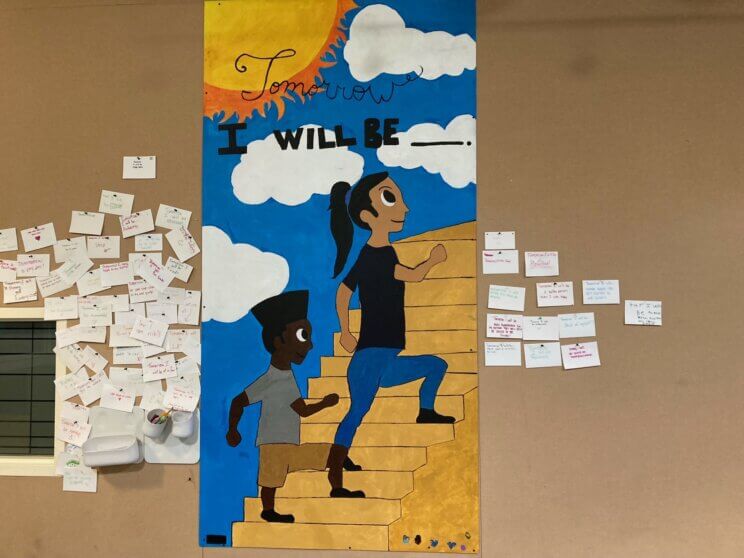
“Tomorrow I Will Be”—the first mural to be completed—is displayed in the hallway inside the Taylor Building. In it, two figures climbing a set of stairs represent the YES Teens. The teen at the bottom of the stairs is wearing a gray uniform shirt, while the older teen higher up the stairs is wearing a blue Science Center uniform shirt.
“Getting their blue shirt is a very big deal for the teens,” explains Krueger. “It’s something they really look forward to as they go through the program.”
Attached to the walls around the mural, index cards contain thoughts and reflections from the teens on where they want to be in the future, with new teens and visitors to the Taylor Building able to contribute to the wall.
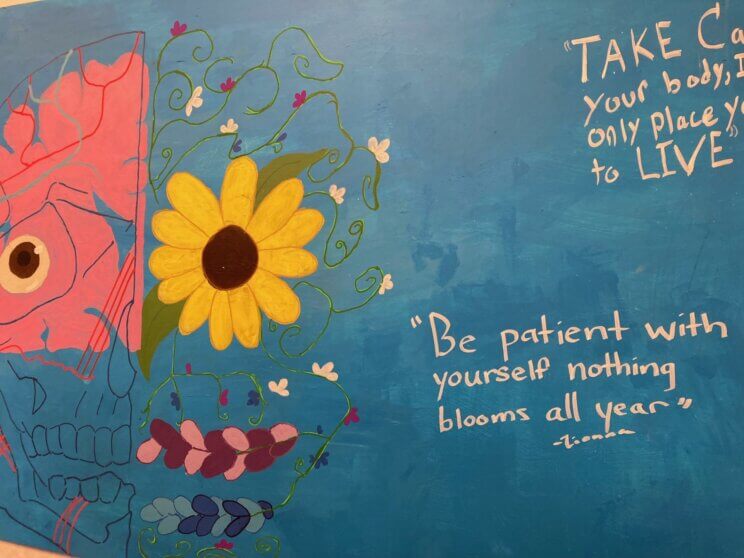
The second mural the YES Teens created for the Integrative Medicine & Well-Being (IMWB) component classroom with the prompt of creating a painting that showcased both physical and mental well-being.
“The teens chose to depict a skull,” says Krueger, “with one side anatomically accurate, and the other made with plants and organic materials. The plants were chosen to symbolize growth and mental health.” As part of the project, the teens also researched and chose quotes to write about the painting that focused on physical and mental health.
Leaving extra room on the mural board, the teens have also made space for others to contribute to the mural. That way, new YES Teens entering the IMWB component can write quotes of their own and the mural can grow and evolve with the program and those in it.
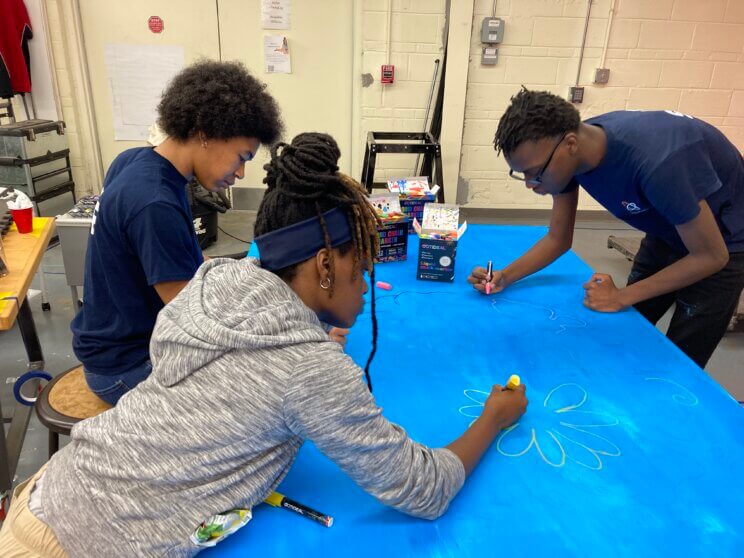
Creating the murals was a collaborative group effort involving a number of YES Teens, including Caleb Tillis, Zay Mathews, Amirra Burks, Harmony Cooper, Kayden Ramsay-Alexander, and Zionna Anderson.
While everyone worked on the painting, YES Teen Zionna created the original designs, while Caleb and Zay handled the majority of the drawing. To translate the digital designs to the larger canvas, the teens had to divide each painting into sections to avoid overlapping or smearing their work. The teens divided roles based on their strengths and abilities; for example, some of the teens opted to handle line art and more intricate parts, whereas other teens felt more comfortable painting the background.
”My favorite part,” says Krueger, “was watching the teens work together and get messy. Since we typically focus on photography it was nice to spend time this summer getting covered in paint.”
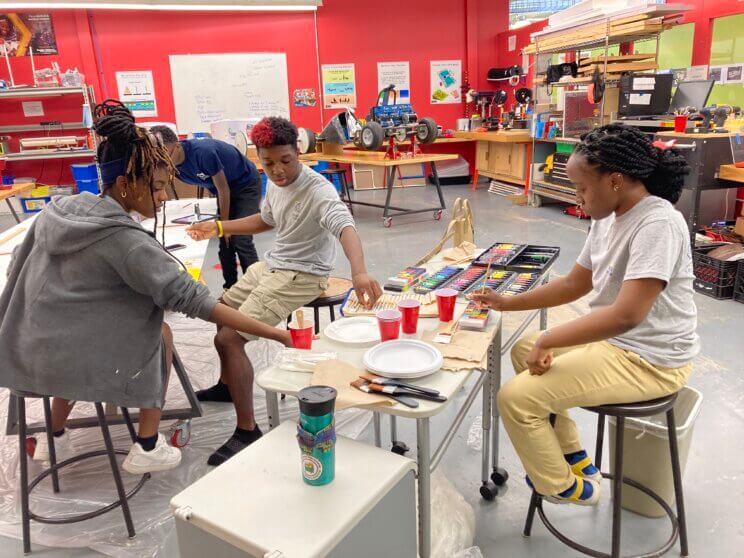
Your Support
Support from donors, Science Center members, and Supporting-level members is instrumental in helping the Science Center continue offering connections to science for everyone in our region. If you’d like to show additional support for our mission, please consider donating to the Science Center’s Curiosity Fund, becoming a member, or becoming a Supporting-level member.
Your Impact
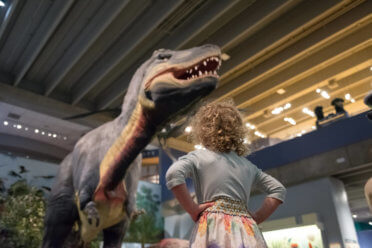
Want to learn more about how the Science Center and its supporters are making a difference for STEM learning in the St. Louis region?






